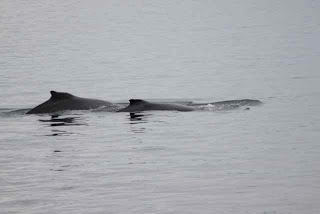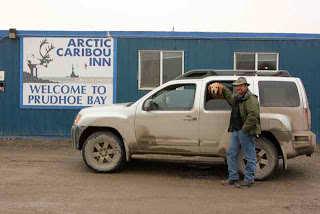 Worthington Glacier heads on Girls Mountain. The entire area is covered in a beautiful dark green slate. We climbed up the rocky morraine, fording icy streams of melt until we were at the foot of the glacier. It felt good to be hiking again. Roxanne even took a short swim in the small lake formed by the glacier’s movement.
Worthington Glacier heads on Girls Mountain. The entire area is covered in a beautiful dark green slate. We climbed up the rocky morraine, fording icy streams of melt until we were at the foot of the glacier. It felt good to be hiking again. Roxanne even took a short swim in the small lake formed by the glacier’s movement.It was still early in the day, so we drove on toward Palmer. The spectacular Matanuska Glacier came into view. Matanuska heads in the Chugach Mountains and treads over 27 miles, reaching widths between two to four miles across. It is the largest glacier accessible by car in Alaska.
The road to Matanuska is private property. The folks who own it charge an access fee. As we were standing in the parking lot of the fee area, a family spied Rox. The children asked to pet her while we exchanged cordialities with their parents. Amazingly, they had flown in from The Woodlands, Texas, to visit Anchorage friends. On the boat tour in Valdez, we met a couple from Conroe. What a small world!
We drove nearly to the foot of the glacier and hiked onto rock and ice. Rivlets of silt-laden melt ran charcoal grey. By the time we reached solid ice, Roxanne’s feathers were heavy with silt. The packed ice crunched beneath our feet. Rox sat only once, discovering that this surface was much too cold for comfort. We walked as far as we could without wearing crampons or hiring a guide.
























































